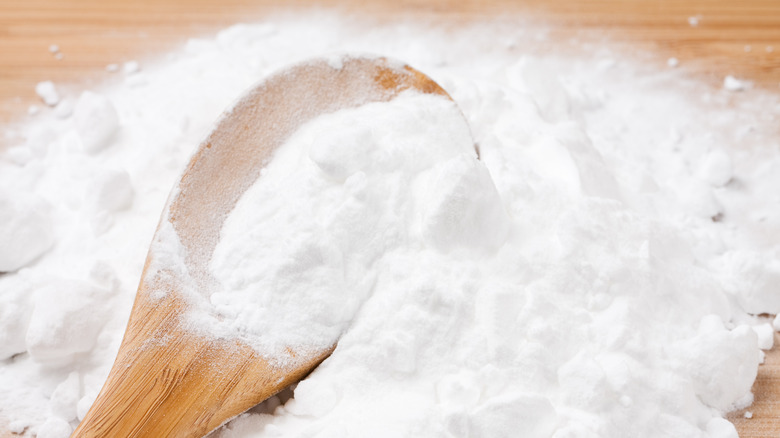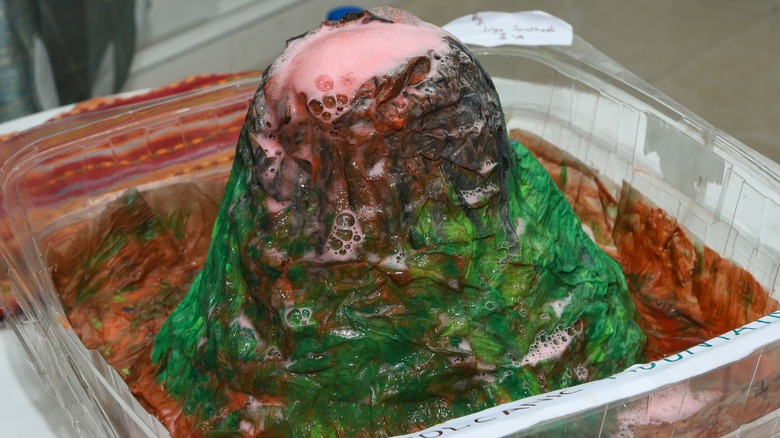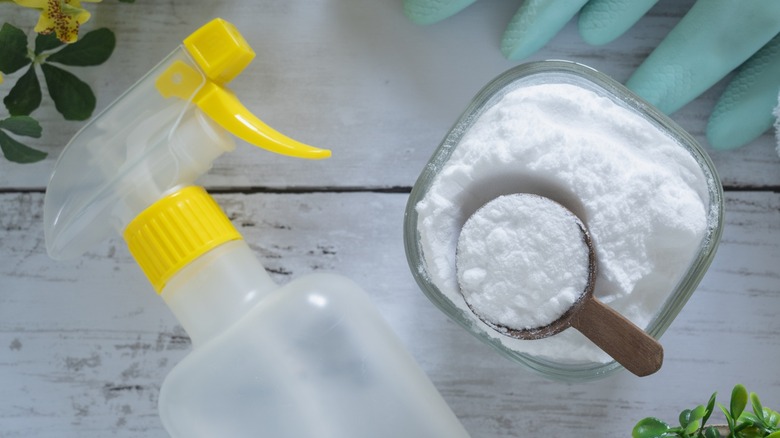The Clever Hack To Remember When To Use Baking Soda Vs Powder
As the old expression goes: "Cooking is an art, baking is a science." It's more important that you get things exactly right when it comes to baking because a tiny measurement mistake can throw the whole end result off. But it's not just measurements; you also have to make sure you're using the right ingredients. And there's no easier mistake to make with baking ingredients than confusing baking powder for baking soda.
Both are leavening agents, so how do you remember the difference between the two, and when you should use one rather than the other? As it turns out, there's an all-important phrase that will help you out, here: "Powder puffs, soda spreads." What this means is that baking powder causes recipes to rise (and keep rising), while baking soda mostly causes them to spread out. In order to understand why this happens, it's important to understand how baking soda and baking powder are different.
Baking soda requires an acid, while baking powder brings its own
First off, let's be clear: Baking soda and baking powder are two distinct products with different chemical formulas. Baking soda is a purely alkaline compound, meaning it's a base that dissolves in water. It's designed to react with acids in ingredients such as yogurt, lemon juice, buttermilk, vinegar, coffee, etc., by generating carbon dioxide gas bubbles. This, in turn, causes the dish to rise and spread. If one of the acids in that list stood out to you, there's a reason for it: The vinegar-baking soda reaction from your middle school science fair volcano is based on the same principle.
Baking powder, meanwhile, is essentially baking soda mixed with a powdered acid in the form of something like cream of tartar or sodium aluminum sulfate (and frequently cornstarch as a thickener). This means that baking powder brings its own acid from home, and all it needs to generate the same reaction is heat and moisture. Adding more baking soda to a recipe doesn't result in more lift unless you add a corresponding amount of acid, but baking powder comes with its own built-in reaction and feeds itself. This is also why baking powder is the secret to perfect scrambled eggs: It makes them fluffy without affecting their flavor.
You can sometimes swap one for the other
So, can you ever use one instead of the other? If you run out of baking soda, you can indeed use other ingredients including baking powder as a substitute in a pinch — as long as you're careful. Essentially, the rule is, if you need to swap baking powder for baking soda, you should use three times as much powder as soda. If you're working in reverse, meanwhile, 1 teaspoon of baking powder is roughly equivalent to ¼ teaspoon of baking soda — but you'll also need to add an acid to get the leavening reaction to work.
You might also wonder about cleaning applications since there are so many for baking soda, from using it to clean stained enamel cookware to deep-cleaning wooden utensils. But you should avoid using baking powder for cleaning, as it's just not nearly as effective because there's less of an alkaline agent in it. Granted, there's not a handy mnemonic like "powder puffs, soda spreads" to help you out with remembering this part, but "don't clean with baking powder" probably does the job.


